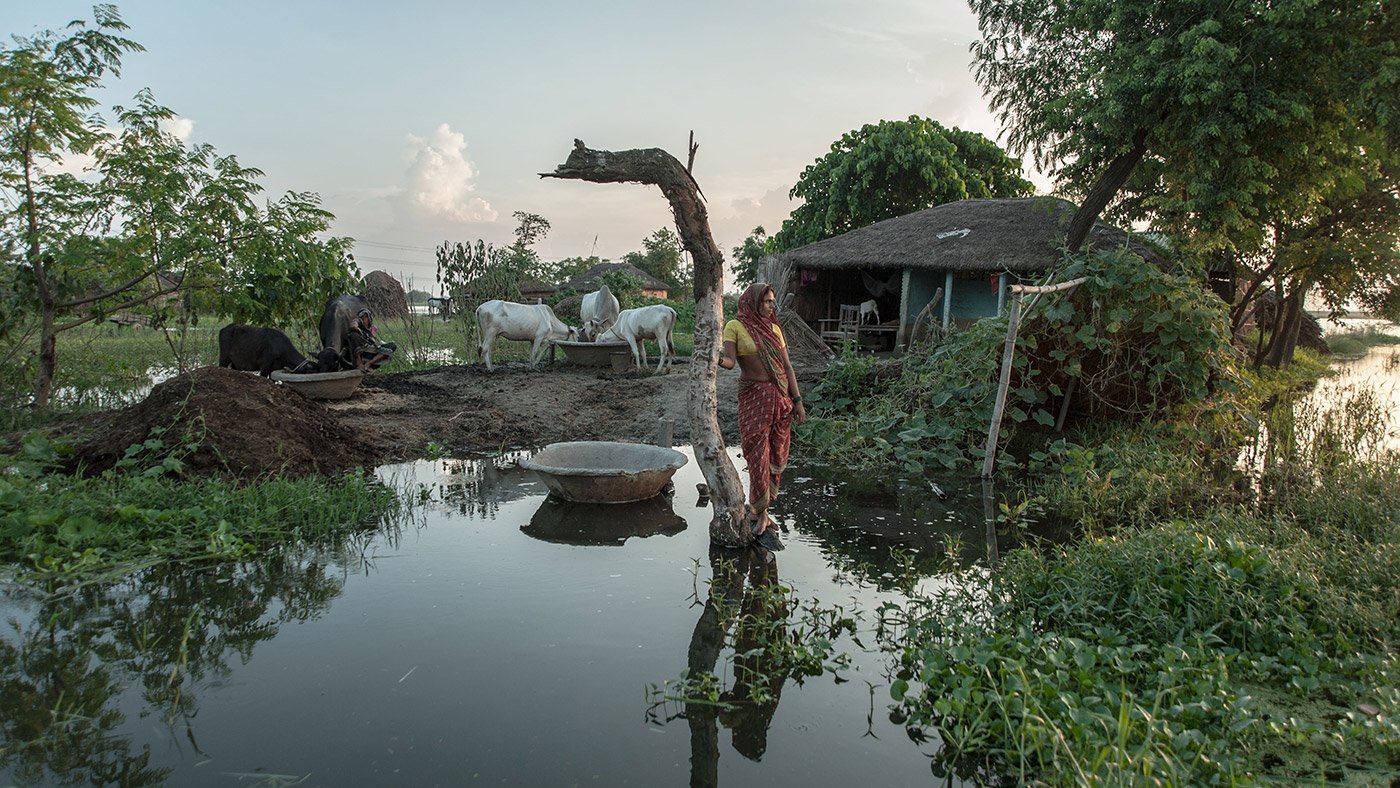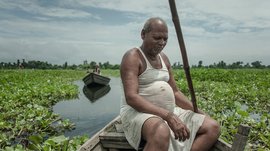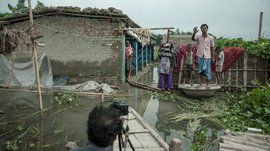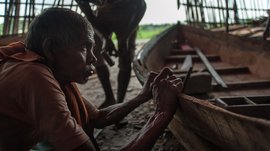In north Bihar, the monsoon was a festive time. After a rain-washed night, women would often come out in their boats, singing and rejoicing the floods. The people had a positive association with the rivers, even though at times they were overwhelmed by the rising waters. Aware of every aspect of the floods – depth, duration and intensity – they took reasonable precautions.Over time, this has changed, and the people of north Bihar have gone from being ‘worshippers’ of floods to becoming ‘victims’ of floods.

‘What can one do when there is so much water? Where does one go?’ , Senu Devi of Gobrahi village asks
The film featured here was shot from July to September 2015. It was made as a part of Sayantoni Palchoudhuri's 2015 PARI fellowship.
Camera and editing by Sambit Dattachaudhuri, a self-taught cinematographer and editor. Over the last two years, he has been collaborating on working on stories related to farming, public health and education.



